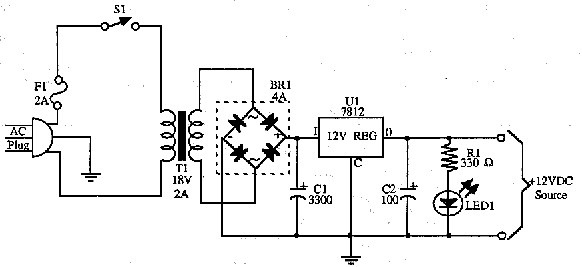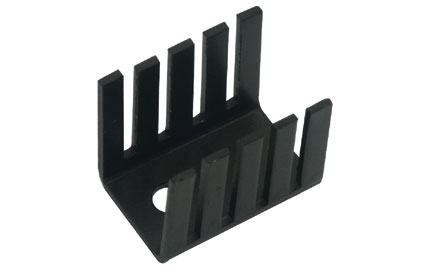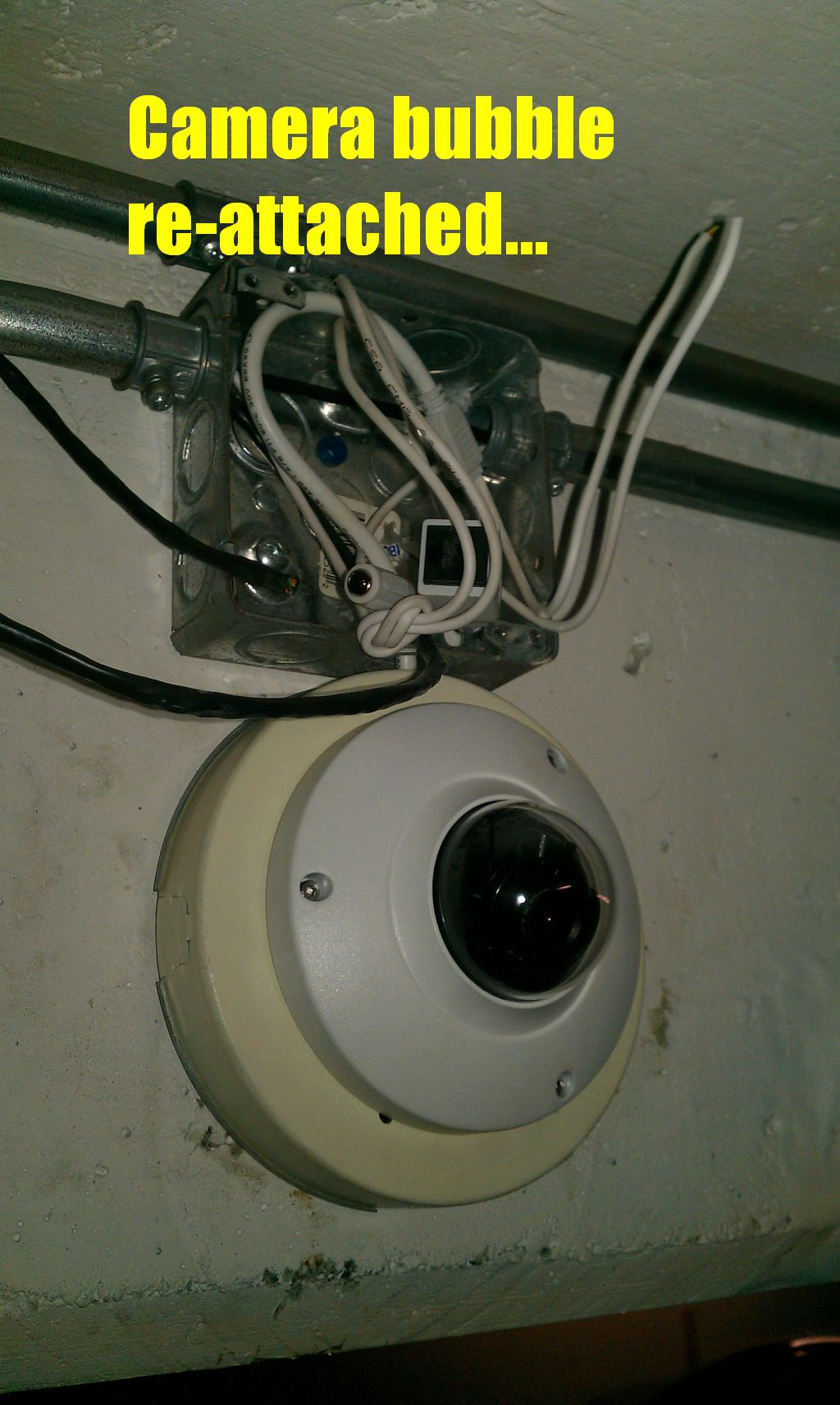

Soundy
-
Content Count
20 -
Joined
-
Last visited
-
Days Won
1
Posts posted by Soundy
-
-
The trickiest part with a longer lens may be finding something that will focus that closely... I'd suggest a cam that will allow you to adjust the back-focus (most common in box cams with CS-mount lenses) so you can fine-tune the focus. Something a little higher megapixel (3MP and up) will allow you to keep it zoomed out a little more while maintaining your PPF. If you're watching 3D objects (like ladybugs), you might want to consider a manual-iris lens as well, so you can control the DOF.
-
Move your existing PC motherboard and all of it's components into a case that can house more hard drives.Or this.
-
Considered a box like mediasonic but not convinced of the reliability. And not sure how that works in terms of accessing the drives separately. I can setup the software to record to a failover drive, so would be nice to access them separatelyMost of these give you various options for RAIDing the drives, or just running as JBOD (Just a Bunch Of Disks), which is what you're looking for.
Do you have a recommended box?There are so many - where to start?
For the cost it seems I could get a case and power supply from Newegg, and fill it with hard drives connected with a few SATA cables.Possibly, except consider that your basic SATA cable is only 18" long... and by the time you reach the card(s) and the drives inside each box, you'll probably only have 6" left between the boxes, with all these cables, and have to be very careful not to move the two boxes apart.
It's the kind of thing that might be useful on a test bench, but I think you'd find it impractical in daily usage.
-
I think SOME Q-Sees are made by Dahua, but good luck figuring out which.
-
So you're thinking a separate case with power supply, and a bunch of SATA cables stringing out the back of your DVR to connect to the drives in the other case?
Personally, I'd suggest just going with something ready-made: any sort of external RAID/JBOD drive enclosure that you can connect via network, eSATA, USB or firewire. Lot easier, and probably more reliable.
-
At that length, I'd be more suspicious of excessive voltage drop (although your local-monitor test would seem to negate that). Are you using two pairs for the power, or three? Can you try measuring the power voltage AT the camera, when the camera is running?
What are the affected cameras mounted to?
-
Yeah, sorry about that - Eastern is a wholesaler, so they won't sell direct... being an integrator, we set up a business account with them, and I still link to them because I have all the links bookmarked
The devices appear to actually be made by Derytech, although THEIR website contains nothing even close to them - looks like they're resold under a number of different names through various online retailers.
-
Why was this bod given the task. He doesn't know anything about CCTV.And neither did you, me or anyone else until it was learned
" title="Applause" /> " title="Applause" /> " title="Applause" />
First off, we need about 750 feet of cable. What kind of ratings should I be looking for that would be sufficient for running through walls, through conduit, etcThe main rating that might be of any concern is the "fire time" or FT rating. FT-4, aka "riser" type, is the most common and least expensive, but local building/electrical/fire codes may require FT-6, aka "plenum" cable, if your runs are in a plenum airspace for any significant distance. This is something you'll have to check for with local laws, though. Some areas may also have different requirements for new vs. retrofit as well.
Second, we are actually thinking about replacing all the cameras with 8 brand new cameras. What would be a good all around, high quality, camera that would work in just about any application/angle/shot/etc.One of the most common recomendations you'll see around here is the CNB VCM-24VF. It's an IP65-rated vandal-resistant dome, true-day/night, excellent low-light image (no IR needed in most cases), has a versatile 2.8-10.5mm lens, can be surface- or flush-mounted, and supports dual power (12VDC or 24VAC, or anything in between).
Second, we need a good DVR. I was looking at the Dahua line and they look very decent. Lots of storage, disk burners, etc.)Excellent choice. I have the four-channel FULLD1 model at home - I'm a dyed-in-the-wool advocate of PC-based DVRs, but this little unit has really impressed me.
Now, as others have noted, you might want to consider using Cat5e and baluns for any new cameras: this is a very good idea, as not only is Cat5e cheaper and easier to work with than coax/power Siamese, but it's also more versatile all-around, and it makes for easy upgrades to IP cameras later. In fact, if you're going to replace all the cameras anyway, might as well look into how easy it is to replace the existing wire as well.
SHOULD you decide to go this way, I'd highly recommend looking into some of these:
This combines power supply and passive baluns all into one rack-mountable unit; you just terminate your camera runs with RJ45 jacks or plugs, or into a patchbay, and plug your cameras in.
At the camera end, one of these again makes for an easy plug-in connection.
With this setup, your runs are already terminated appropriately, so switching a camera out for an IP camera later is as easy as unplugging from both ends, plugging in the new camera, and plugging the other end into a PoE switch.
Also worth considering: if you think you may upgrade some or all cameras to IP in the near future, take a look at a hybrid DVR, which can record both analog and IP feeds. Costs a bit more, but saves a lot of hassle in the long run.
-
Anybody has come across these cameras? These give megapix pictures.... Will these cams work on a DVR (Dahua 1U.... ) or.. a HD SDI DVR is necessary to get most of these cams?An SDI-capable DVR is required to use these cameras AT ALL. They WILL NOT work with a standard DVR.
SDI is a totally different story, analogue is not even close to it. SDI is a digital signal. And uncompressed, so no latency, no delay. No compression artefacts too in live preview.But, the video must still be compressed for storage, so the benefits over IP end right there.
SDI cameras are currently limited to 2MP (1080p) as well.
-
so the NVR has the ability to downsample (or upsample if IPC outputs low res) video data that it receives from the camera?
also, can the camera stream @ h.264 while the NVR records it @ mpeg-2?
I am confused on who sets the recording rate? The IP Camera or the NVR?As with other recent questions, the answer is again, "IT DEPENDS". Different cameras and different NVRs interact in different ways. Sometimes it varies with different codecs as well.
Case in point: with a Vigil DVR, when you're using a camera that stream MJPEG, you just select your record rate in Vigil. With an H.264 camera, however, you can either set your record rate at 1fps, or select "Set By Camera", in which case you set the framerate in the camera, and Vigil simply receives and writes the stream.
Most WILL NOT downsample for recording, although many can re-encode the video to a smaller stream for remote viewing. I've never seen one that would upsample -that would just be pointless, taking up less space but offering no real improvement.
also, can the camera stream @ h.264 while the NVR records it @ mpeg-2?And again, that depends on the camera. Some support multi-streaming, some don't. I'm looking at a Vivotek right now that actually has FOUR separate user-configurable streams, and allows you to set frame size (resolution), framerate, and quality (compression) level, for MPEG-4, JPEG, and H.264... all configured separately for each stream. Many cameras simply offer one high-quality stream for recording, and one sub-stream at CIF or D1 for remote viewing. And many others just give you one stream.
I also see this on a QNAP NVR"Recording Performance - Up to 30 fps at D1 or VGA for each channel"
Am I misinterpreting something? Does this mean that it sets a limit so as not to overtax the bandwidth/processor of the NVR?
Exactly... because overloading the system would lead to image problems and thus to user complaints. So, most will put a "hard limit" in software and allow some headroom.
-
My only experience with sub-$500 MP cameras is with Dahua, but if you have good lighting, you'll find their 2MP mini-dome is a really decent camera for the price. The 3MP box cam is a "true day/night" camera and does even better with low light, but requires a bulky enclosure for outdoor use.
-
Where are you located? If you're in North America, I'd suggest looking up the Dahua brand. They have 8-channel DVRs ranging from around $150 to $450.
-
This discussion is kinda missing something without Rory's complaining about his bone-chilling winters in the low 70s....
-
I didn't have a 'tantrum' and I didn't refuse to talk to anyone, and frankly I find that comment extremely unhelpful and quite patronizing.Well that's certainly the way you made it sound - like you were barely able to hold yourself back from jumping the guy. From the way you've played out the story, everything was going fine until Mr. My-son-is-an-installer piped up, and from there you leave the impression that you just got in a snit about it and left. Apologies if that's not the case, but that's how you've made it sound.
I think I behaved with restraint and tact considering what happened.Nothing "happened". Some clown overheard your conversation and butted in. Big freakin' deal, it happens all the time. It shouldn't be something to get so worked up about. Laugh it off and move on.
My decision is that in future I will not be discussing my business in front of anyone other than the decision maker and certainly not in a workshop with other's listening on. I am entirely to blame and I should have known better to avoid such a situation.Blame yourself all you want, but NOTHING HAPPENED that's out of the ordinary. Unless it's business that requires confidentiality, there's no need to be so cloak-and-dagger about it.
I will be going in to speak to the boss there, he's off with a bad back at the moment so I'm not sure when he'll be in I'll telephone first. Door knocking is my only source of business at the moment and I don't have the budget to advertise or do emailings or surface mailings and I have not been trading as a supplier and installer that long.Think of the alternative that could have happened in this scenario (and HAS happened for me, several times, in fact): Customer asks what you're talking about; shop guy tells him it's about their CCTV system; customer asks for your card because he's interested in setting up a system as well.
If you're trying to drum up business like this, you'd probably be better off to consider any avenue open.
-
Hello,I believe two ways are possible: You can use a camera with 'intelligent' IR illuminator, which will adjust the power of LED matrix accordingly, (camera example might be Sunell SN-IRC4920AJ (day/night Sony Effio-E)
True, although you still get that ghostly-green look with glowing eyes.
You can use external IR illuminator with LED array sending IR light beam of 940 nm wavelength. Infrared radiation at this wavelength is completely invisible to the human eye. Most IR illuminators use 850nm which is visible for humans.Make sure the camera can handle those wavelengths though - most sensors are pretty inefficient at that point.
-
You'll get a lot better reception if you come into the forum with the intent of sharing knowledge, rather than just selling your product/service.
-
The LM78xx series specifies a maximum input of 24V - and while the datasheet doesn't state it outright (http://www.fairchildsemi.com/ds/LM/LM7805.pdf), if memory serves, they're designed to take DC input, not AC... so at the very least you'd have to rectify (and preferably filter) the input voltage first:

Also, if it's going into thermal shutdown, that indicates there's not enough cooling. I wouldn't run more than 100mA through one of those without SOME sort of heat sink attached, even if it's just a little piece of aluminum that's not attached to anything else:

As Alex notes, an LM317 is a better bet: designed for input voltages of up to 40VDC and output current up to 1.5A. http://www.fairchildsemi.com/ds/LM/LM317.pdf
HOWEVER - note that you'll still need to rectify the input voltage - if you're just connecting it straight to the AC, I'd pretty much guarantee that's most of your problem.
Brian makes the best point though: there are lots of these kinds of products out there already that are just plug'n'go. We've used this one extensively, as they're cheap from our wholesaler, and absolutely rock-solid: http://www.electronicproductonline.com/catalog/product_info.php?products_id=2237 - AC input, jumpers for 6/12/24VDC fixed outputs as well as a variable output, built-in fuse, built-in support for battery backup... 1A and 3A (http://www.electronicproductonline.com/catalog/product_info.php?cPath=31_42&products_id=1770) versions available.
-
Personally, I think you're getting riled up over nothing - if anything, the customer is something I would have joked about with the second-in-command (after moving out of earshot, of course)... you know, something like, "Yeah, and I bet his son is the cheapest around to fix my car, too."
Besides, I see no problem talking about it with the owner's right-hand man - chances are he doesn't have any say in the final decision anyway, and if he does, he's probably equally unimpressed by the customer's rudeness.
Frankly, if it was me, I'd probably be unimpressed as well by this "professional" guy having a tantrum over it and refusing to talk to me any more, too - that's just rude and condescending on your part.
-
Never mind ethical, I'd be worried about what's legal. On this side of the pond, putting a camera anywhere one would have a "reasonable expectation of privacy" - such as a washroom, change room, bedroom, etc. - IS simply illegal, let alone unethical. The person installing the camera could be charged, as well as the person who commissioned the installation.
Screw the competitor - best to employ CYA practices.
-
So did you end up talking to the boss, or did you just leave at that point? Because that (leaving) would be the only REAL mistake.
Seriously, how many times do you think this garage owner has been in the same position - trying to sell someone on his professional services only to have some backyard mechanic pipe up about how he can do the same work for a case of beer?
And how many times do you think he's had the last laugh, having to clean up the "cheaper" guy's mess, and had it end up costing the customer more than it would have if he'd brought it to the shop in the first place?
Heck, I can think of a few times I've had to pay a shop to clean up my own mistakes on my own cars - I'm a pretty fair backyard mechanic myself, but when you get your oil pan partially swapped in your driveway, only to find you don't have the facilities (hoist) or tools to finish the job, and have to have the car towed to a real mechanic's shop with all the parts in a box in the back... well, that's when you come to appreciate why it costs what it does to have a pro do the work.
If this shop owner is a smart businessman, he's not going to simply jump at the first "my son is the cheapest installer ever!" that comes through the door... and if he does, well, he deserves exactly what he ends up with.
I hope you stuck with it - as I say, the only REAL mistake would have been to bail at that point.
-
I suspect it will stick around as a niche product - it does have some features that would be beneficial in certain circumstances, such as zero latency between the time the camera sees it and the time you see it... and it transmits *uncompressed* 1080p video at some 3Gbps, making for extremely clean *live* images.
But neither of these, IMO, have any particular benefit in 99% of installations - you still have to compress the video for storage, using the same codecs as you would for IP MP cameras, so while you do get spectacular live images, all else being equal, your recorded video will be indistinguishable from IP... and by its nature, the vast majority of surveillance video has "planned latency", meaning that it's not going to be watched until hours, days, or even weeks after an incident.. at that point, what's a few extra milliseconds?
-
Well again, that depends on the camera and NVR/VMS. Most commonly, it's used to trigger recording, or to start sending a stream to storage. It may also be used to send email/SMS alerts, or to trigger an alarm output, or any number of other things that the camera's manufacturer may program it to do.
-
Suggest this camera for excellent low-light performance: http://www.cnbusa.com/en/html/product/product.php?seqx_prod=1073 - they can be had for well under $200.
Then add a motion-activated flood light or two - low power, 50W or so should suffice. Place it/them near the camera.
This has three advantages:
One, no glowing red LEDs;
Two, white light gives you nice color images;
Three, when someone is prowling around in the dark and a bright white light snaps on, the natural reaction is usually to look toward the source of the light - this means also looking right toward the camera.
-
Depends on the style of junction box... try an outdoor octagon or something:

We just used Wiremold round boxes as mounts for Dahua 2MP domes:


bullet camera adjustment
in Security Cameras
Posted
Motion detection is usually controlled in the DVR, although what you're experiencing is common with cameras that have built-in LEDs and attract bugs.
Most bullet cameras can have the field of view "adjusted" by changing the lens, although with cheap cameras like this, you'd probably destroy the weatherproofing by doing that.